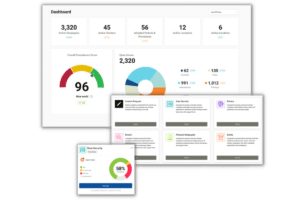
At least 91% of professionals who specialize in project management say that their organizations often face challenges when managing their projects. The healthcare industry is included in this struggle, and the Office of Inspector General (OIG) audits are great examples. Audits are often intimidating, especially when industry standards fluctuate consistently.
Compliance officers often struggle with overall audit oversight, which includes tracking project phases, inaccurate reporting practices, and less efficient workflows. More healthcare organizations are being proactive rather than reactive with their OIG audit plan. Using automated solutions can streamline the OIG audit process, reduce the chances of waste production, and help decrease the opportunity of experiencing preventable fines.
Continue reading to learn what your OIG audit plan needs and why you can’t afford to dismiss the chance to improve your current tactics.
Bringing Down the Pressure of an Audit
Investing in innovative software solutions can significantly enhance the efficiency and effectiveness of your OIG audit plan. Instead of risking noncompliance with manual or scattered workflows and tracking efforts, compliance officers are often seeking a “ready-to-use” option. With the right software, you can simply upload your OIG plan and have the necessary features to move forward with task-tracking compliance readiness.
Most OIG audits are triggered through either the waste and abuse hotline, a whistleblower disclosure, or a high-level request. Regardless of what triggers the audit, your timely response will determine how smoothly the process occurs from the time of notification to completion. Consider a few of the ways the right software solution can limit the stress of an audit.
Taking Advantage of OIG Audit Process Automation
Automated software streamlines the auditing process, reducing manual effort and human error. With an error occurring for every 1 out of 10 patients in healthcare, there is the same amount of room for mistakes in terms of compliance, which is something office managers often want to avoid.
Automating your workflows can enhance the way you use your OIG audit plan, and you can also automate data collection, analysis, and reporting, better ensuring accuracy and continued consistency. This type of solution also helps compliance officers to easily track different project phases and monitor compliance activities as they are happening.
Gain Access to a Centralized Platform
The OIG provides organizations with multiple regulations tailored to particular providers and practices. Having software that provides a centralized platform for managing all compliance-related tasks and documentation helps structure your program and your practice’s compliance with all aspects of the program.
It facilitates better collaboration among team members, allowing seamless communication and workflow management. Compliance officers can also access essential information and reports from anywhere, in real-time, all in one place, which improves program accessibility and flexibility.
Customization and Scalability
Software solutions offer customization options to tailor an organization’s OIG audit plan to its specific needs. They can scale to accommodate growth and a variety of changes and regulatory shifts within the industry, ensuring long-term viability. Compliance officers can adapt the software to incorporate new regulations and guidelines as they arise, which is a primary point for many organizations when starting to prioritize proactive planning.
Improving Your Existing Practices Without the Difficulty
With the continuously changing dynamic of the healthcare industry, compliance officers have to be just as flexible in terms of their compliance plans. Having an OIG audit plan is a great step toward preparation. However, if it’s not deployed properly, you aren’t getting as much as you could out of your efforts.








